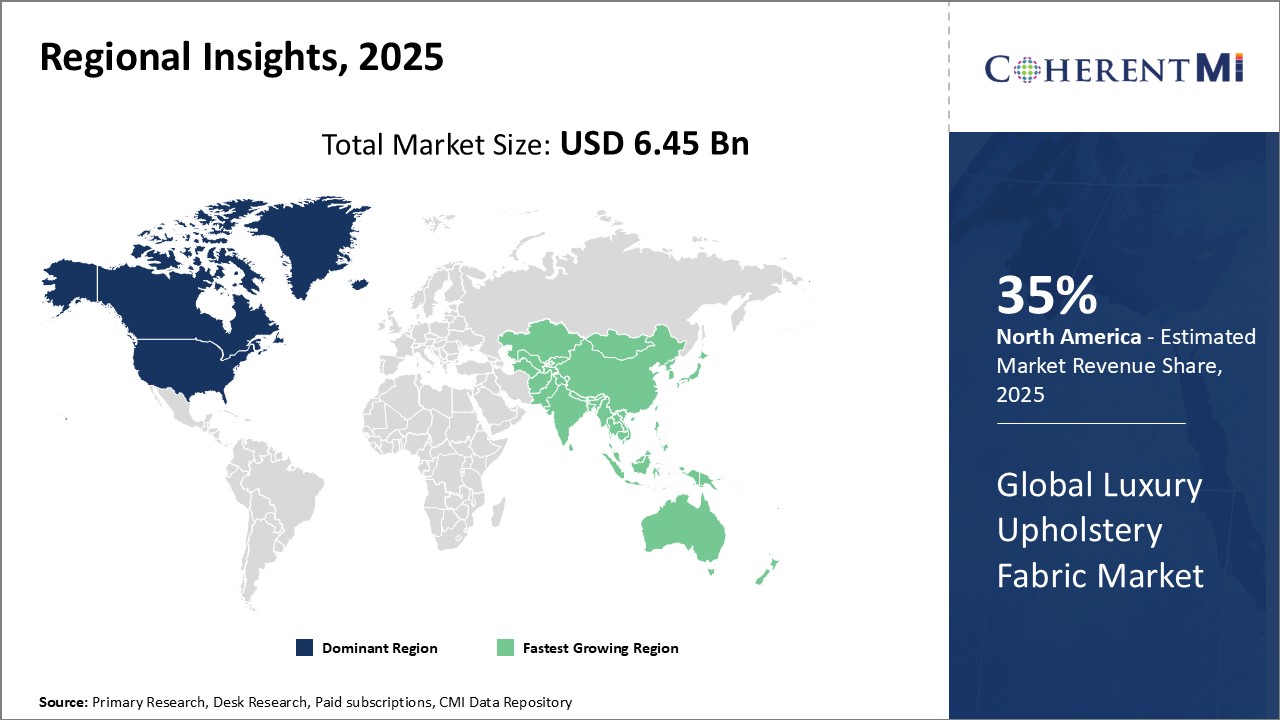Global Luxury Upholstery Fabric Market Trends
- Shift towards natural luxury fibers: Consumers today increasingly prefer natural luxury textiles like silk, cotton, wool, and linen over synthetic counterparts. The opulent drape, breathability, and hypoallergenic properties of such fibers account for their surging popularity in upholstery applications. 100% wool velvet, for instance, offers vibrant colors, inherent fire retardation, and unmatched durability. Wool also absorbs humidity and is biodegradable. Silk, though delicate, provides unparalleled luster, shine, and fluidity in drape. The shift towards eco-friendly fibers dovetails with the sustainability movement. Brands are responding by expanding their offerings of upholstery made from renewable fibers grown using organic methods.
- Animal-free leather substitutes: With rising ethical concerns over animal cruelty in sourcing leather, faux leathers have emerged as a popular alternative. Manufacturers are innovating high-performance, luxurious materials like velvet, microfibers, and plant leather to mimic the appearance and texture of real leather. Cactus, apple, mushroom, and grape leathers made from agricultural food waste offer cruelty-free durability. Technological advancements have improved the quality of synthetic leather as well. Leather alternatives that align with eco-values help brands attract and retain today’s ethically-minded luxury consumers.
- Smart temperature control fabrics: Phase change materials (PCM) technology integrated into textiles is an emerging trend enabling upholstery fabrics to dynamically adjust their temperature. Microcapsules containing special wax compounds have been incorporated into fabrics like polyester, wool, cotton, etc. This allows the textiles to heat up or cool down depending on ambient temperatures. Such smart temperature-control fabrics lend greater comfort to consumers using upholstered furniture or bedding. They also support energy efficiency in homes and commercial spaces by maintaining optimal thermal levels. The technology is gaining popularity for window treatments as well. Advancements in flexible electronics have made thermoregulating fabrics commercially scalable.
- Antimicrobial and self-cleaning finishes: In the post-pandemic era, consumers have become more aware of germs and hygiene. To address this need, manufacturers are enhancing luxury upholstery fabrics with antimicrobial and self-cleaning finishes that inhibit bacterial growth and contamination. Topical treatments or inherent engineering of nano-particles like titanium dioxide into textiles impart antibacterial properties. Self-cleaning coatings enable stains to slide off easily from fabric surfaces without harsh scrubbing. Such finishes maintain the pristine, hygienic look of upholstery fabrics, especially in high-traffic settings like offices, hospitals, and transit systems. The antimicrobial functionality also protects the textile itself from deterioration.
Global Luxury Upholstery Fabric Market Regional Insights:

- North America is the largest regional market for luxury upholstery fabric, accounting for over 35% of the global market in 2025. The high demand for luxury upholstery fabric in this region is attributed to the increasing disposable incomes of consumers, the growing trend of home improvement, and the increasing demand for high-end furniture.
- Europe is the second-largest regional market for luxury upholstery fabric, accounting for over 25% of the global market in 2025. The high demand for luxury upholstery fabric in this region is attributed to the rich cultural heritage of the region and the high aesthetic standards of consumers.
- Asia Pacific is the fastest-growing regional market for luxury upholstery fabric, with a CAGR of over 15% during the forecast period. The high growth of the market in this region is attributed to the increasing urbanization, the rising disposable incomes of consumers, and the growing demand for luxury goods.